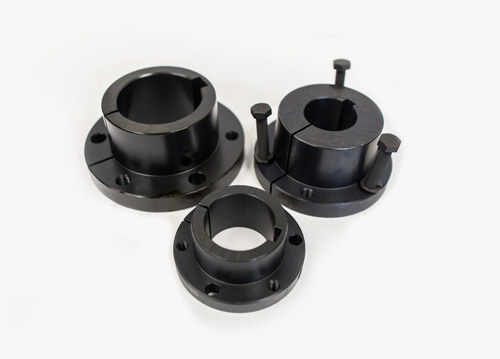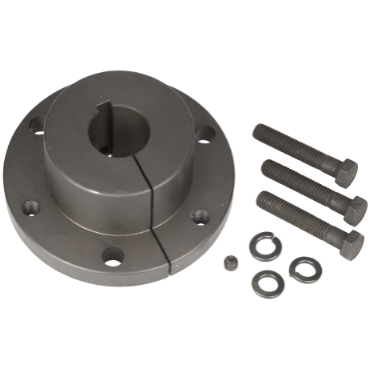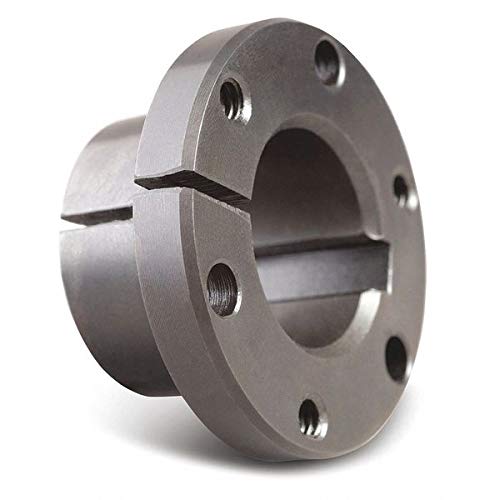
What are the temperature and environmental considerations when using QD bushings?
When using QD (Quick Disconnect) bushings, it is important to take into account temperature and environmental factors to ensure their optimal performance and longevity. Here are some key considerations regarding temperature and environmental conditions:
- Temperature Range: QD bushings are typically designed to operate within specific temperature ranges. It is crucial to understand the temperature limits specified by the manufacturer for the particular type and material of the bushing. Exceeding these temperature limits can lead to premature wear, reduced load capacity, dimensional changes, or even failure of the bushing. Extreme heat or cold can affect the material properties, lubrication, and overall functionality of the bushing.
- Operating Environment: The operating environment plays a significant role in determining the performance and durability of QD bushings. Factors such as moisture, humidity, dust, chemicals, and corrosive substances can impact the bushing’s performance and lifespan. In corrosive environments, it is essential to select bushings made from materials that offer resistance to corrosion or consider additional protective measures such as coatings or seals. Similarly, in dusty or dirty environments, regular cleaning and maintenance are necessary to prevent contaminants from impairing the bushing’s operation.
- Lubrication: Proper lubrication is critical for the smooth operation and longevity of QD bushings. The selection of lubricant should take into account the anticipated temperature range, operating conditions, and the manufacturer’s recommendations. Lubrication helps reduce friction, wear, and heat generation within the bushing, ensuring efficient power transmission and preventing premature failure. Regular lubrication maintenance should be carried out as per the manufacturer’s guidelines.
- Load and Speed: The temperature of QD bushings can be influenced by the magnitude of the applied load and the rotational speed. Higher loads and speeds generate more heat, which can impact the temperature of the bushing and its surrounding components. It is important to consider these factors and select QD bushings that are capable of handling the anticipated loads and speeds within the specified temperature range.
- Vibration and Shock: Excessive vibration and shock can affect the performance and reliability of QD bushings. Vibrations can cause fretting, loosening, or misalignment of the bushing, leading to increased wear and reduced service life. If the application involves significant vibration or shock loads, it is important to select QD bushings that are designed to withstand such conditions or consider additional measures such as using locking compounds or supplementary fasteners to enhance the bushing’s stability.
It is crucial to consult the manufacturer’s documentation, guidelines, and specifications for the specific QD bushings you are using. They will provide detailed information on temperature limits, environmental considerations, and any particular requirements or recommendations for the bushing’s operation and maintenance.
By considering temperature and environmental factors, selecting appropriate materials, ensuring proper lubrication, and addressing specific application requirements, you can maximize the performance and lifespan of QD bushings in your mechanical systems, contributing to their overall reliability and efficiency.

Can I get advice on selecting the right QD bushings based on torque, speed, and load requirements?
When selecting the right QD (Quick Disconnect) bushings based on torque, speed, and load requirements, it is crucial to consider several factors to ensure optimal performance and compatibility. Here is some advice to guide you in the selection process:
- Torque Capacity: Determine the maximum torque that will be transmitted through the QD bushing in your application. This can be influenced by factors such as the power source, driven component, and operating conditions. Check the manufacturer’s specifications for the QD bushing’s torque capacity rating. It is important to choose a QD bushing that can handle the anticipated torque without exceeding its limits to ensure reliable and safe operation.
- Speed Limitations: Consider the rotational speed or RPM (revolutions per minute) at which the QD bushing will operate. Higher speeds can generate centrifugal forces, which can affect the performance and stability of the bushing. Verify the manufacturer’s specifications for the maximum recommended speed rating of the QD bushing. Ensure that the selected bushing can handle the anticipated speed without compromising its integrity or causing excessive wear.
- Load Requirements: Evaluate the applied load on the QD bushing, including axial, radial, and moment loads. Consider factors such as the weight of the driven component, dynamic forces, and any external forces acting on the system. Check the manufacturer’s specifications for the load capacity ratings of the QD bushing. It is essential to select a bushing that can withstand the anticipated loads without experiencing excessive deformation or failure.
- Material Selection: QD bushings are available in various materials, such as steel, stainless steel, and cast iron. Consider the environmental conditions, temperature range, and potential exposure to corrosive substances or contaminants in your application. Choose a QD bushing material that offers the necessary strength, corrosion resistance, and durability for the specific operating conditions.
- Consult with Manufacturers and Engineers: If you have specific and complex requirements or are unsure about the selection process, it is advisable to consult with QD bushing manufacturers or experienced engineers. They can provide expert guidance based on their knowledge and experience. Sharing comprehensive information about your application, including torque, speed, load requirements, and other relevant factors, will help them recommend the most suitable QD bushing for your needs.
It is crucial to note that selecting the right QD bushings goes beyond torque, speed, and load requirements. Other factors, such as shaft diameter, shaft fit, axial positioning requirements, and compatibility with the driven component, also play a significant role. Always refer to the manufacturer’s specifications, guidelines, and recommendations to ensure proper selection and installation of the QD bushings in your power transmission or conveying system.
By considering these factors and seeking professional advice when needed, you can make informed decisions and choose the right QD bushings that meet your torque, speed, and load requirements, leading to optimal performance and longevity of your system.

What is a QD bushing, and how does it differ from other types of bushings?
A QD (Quick Disconnect) bushing is a type of bushing used for mounting components on a shaft in power transmission applications. It provides a reliable and efficient connection between the shaft and the mounted component, such as pulleys, sprockets, or sheaves.
QD bushings differ from other types of bushings in their design and installation method. Here are some key characteristics and differences of QD bushings compared to other types of bushings:
- Design: QD bushings typically consist of a flanged bushing with one or more tapered grooves on the inner circumference and a corresponding taper on the outer surface. The flange provides axial support for the mounted component, while the tapered surfaces enable a tight and secure fit onto the shaft. The taper design allows for easy installation and removal of the bushing with minimal effort.
- Installation: Installing a QD bushing involves a straightforward process. The bushing is placed over the shaft and positioned at the desired location. As the bushing is tightened, the tapered surfaces create a wedging action that securely locks the bushing onto the shaft. This installation method eliminates the need for additional components like set screws, keys, or locking devices. It provides a reliable and self-centering connection that minimizes shaft slippage and ensures efficient power transmission.
- Adjustability: QD bushings offer adjustability, allowing for precise positioning of the mounted component along the shaft. By adjusting the position of the bushing, the axial location of the mounted component can be easily modified, enabling fine-tuning of the power transmission system.
- Compatibility: QD bushings are designed to be compatible with a wide range of shaft sizes. They are available in various sizes and configurations to accommodate different shaft diameters and tolerances. This versatility makes QD bushings suitable for a variety of applications across different industries.
- Removability: One of the key advantages of QD bushings is their quick disconnect feature. When it becomes necessary to remove or replace the mounted component, the QD bushing can be easily released by loosening the tightening bolts. This allows for efficient maintenance and replacement without the need to disassemble the entire power transmission system.
Overall, QD bushings offer a reliable, adjustable, and user-friendly solution for mounting components on shafts in power transmission applications. Their unique design and installation method make them a popular choice in various industries where efficient and secure power transmission is required.


editor by CX 2023-12-15